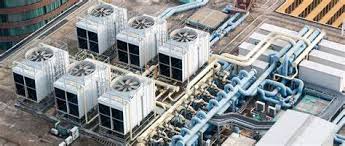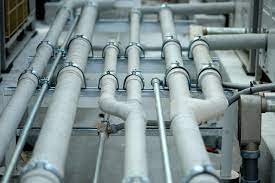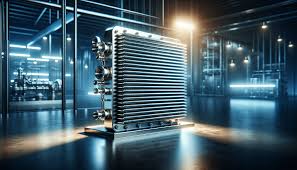 Diuwin Game – Official Login & Play to Win Real Rewards! 🔥
Diuwin Game – Official Login & Play to Win Real Rewards! 🔥
Role of Leading Companies in Shaping the Latest Trends in the Elevator Market
Written by Antonia » Updated on: February 01st, 2025

Introduction:
The elevator market has undergone significant advancements in recent years, driven by a demand for smarter, more efficient, and accessible systems. The leading companies in the industry have been at the forefront of shaping these changes, focusing on innovations that improve user experience, increase energy efficiency, and enhance accessibility. With an ever-growing emphasis on urbanization and building design, the evolution of elevators is also increasingly influenced by inclusivity and ease of access for all users, including the elderly and disabled.
This article explores the role of leading companies in the elevator market, particularly in developing elevators that prioritize elderly and disabled accessibility, alongside other innovations and trends that are shaping the industry today.
The Growing Need for Accessible Elevators
With urbanization rapidly increasing and the rise of multi-story buildings, elevators have become a key part of daily life for millions of people around the world. However, for elderly individuals and people with disabilities, the need for accessible elevators is paramount. Elevators must not only offer functionality and efficiency but also be designed to accommodate individuals with mobility challenges, ensuring they have equal access to buildings and facilities.
In response to this demand, leading elevator manufacturers are developing advanced systems that focus on accessibility, ensuring their products meet the specific needs of all building occupants. Companies like Otis, Kone, Schindler, and Thyssenkrupp have been instrumental in driving these developments, integrating inclusive design features into their elevator offerings while also incorporating innovative technologies that support the mobility and safety of elderly and disabled users.
The Role of Leading Companies in Developing Elevators for Elderly and Disabled Accessibility
Otis, one of the most recognized names in the elevator industry, has long been dedicated to creating solutions that improve accessibility.. The platform uses voice commands and touchless controls, making it more accessible for elderly and disabled passengers who may have difficulty operating traditional elevator buttons.
Kone, a global leader in elevator manufacturing, has also been making strides in accessible elevator technology. Furthermore, Kone has implemented modern technologies like touchless controls and voice-activated systems, allowing users with limited mobility or dexterity to use elevators without having to physically press buttons.
Additionally, Schindler, known for its focus on advanced mobility solutions, is committed to enhancing accessibility for people with disabilities. Their Schindler 7000 series elevators can be equipped with automatic doors and floor recognition systems that assist those with visual impairments. The use of voice commands to guide passengers to their destination floor is another key feature that makes their elevators accessible to a wider range of users.
Another key player, Thyssenkrupp, has made significant strides with its MULTI system, a rope-less elevator that uses magnetic levitation. This cutting-edge system provides enhanced mobility, especially for people with disabilities, as it offers more flexible movement across horizontal and vertical spaces. The MULTI system’s adaptable design allows it to be used in public buildings and commercial spaces with a high volume of visitors, enhancing accessibility for everyone, including elderly individuals and those with limited mobility.
Features of Modern Elevators for Elderly and Disabled Accessibility
The integration of inclusive design features in elevators has become a priority in the elevator market. Here are some of the key features that leading companies are incorporating into their elevator designs to meet the needs of elderly and disabled users:
1. Spacious Cabins and Doors
Elevator cabins and doors are designed to be spacious enough to accommodate mobility aids such as wheelchairs, walkers, and strollers. Modern elevator manufacturers are ensuring that cabins are wide enough for users to enter and exit comfortably without the need to rush or maneuver awkwardly. Additionally, large, automatic doors make it easier for individuals with limited strength or dexterity to access the elevator.
2. Low-Entry Thresholds
One of the most common challenges for elderly and disabled individuals is stepping into an elevator with a high threshold. To overcome this, leading elevator companies have designed systems with low-entry thresholds. These thresholds reduce the height difference between the building floor and the elevator, making it easier for users with mobility impairments to enter and exit.
3. Voice Control and Touchless Features
To assist users who may struggle with pressing buttons due to limited dexterity or strength, voice-activated systems have become increasingly common. These systems allow users to call an elevator or select a floor simply by speaking a command. Similarly, touchless controls, such as infrared sensors and gesture-based systems, allow users to interact with the elevator without physical contact, which is particularly helpful in promoting hygiene and accessibility.
4. Tactile and Visual Indicators
For users with visual impairments, leading companies are incorporating tactile buttons and raised floor indicators to help guide them through the elevator system. These indicators make it easier for blind or visually impaired passengers to know when they have reached their desired floor. Additionally, some elevator systems feature audio cues to announce when the doors are opening and which floor is being reached, helping individuals with visual impairments navigate the elevator independently.
5. Advanced Safety Features
Safety is a top priority for modern elevators. For elderly and disabled users, elevators are equipped with advanced safety features such as emergency communication systems, low-speed controls for smoother starts and stops, and anti-slip flooring to reduce the risk of falls. These features ensure that passengers feel safe and confident using the elevator at all times.
The Impact of Smart Technology on Accessibility
Smart technology is playing a major role in the development of more accessible elevators. IoT (Internet of Things) integration allows elevators to be connected to the internet, enabling real-time monitoring and predictive maintenance. This is particularly beneficial for elderly and disabled users, as it ensures that elevators are functioning optimally and are less likely to experience downtime, which can be inconvenient and even dangerous.
For example, Otis’s ONE platform integrates predictive analytics that helps maintain the system by detecting issues before they occur. This results in reduced downtime and ensures that elevators are always in peak condition, allowing users with limited mobility to rely on them when needed. Similarly, Kone’s smart maintenance services provide real-time updates and can predict issues that could potentially hinder access, ensuring that issues are fixed proactively.
Additionally, AI-powered systems are being used to improve the functionality of elevators. AI can help optimize elevator use by predicting peak traffic times and adjusting elevator schedules accordingly. This minimizes wait times for elderly and disabled passengers, enhancing their experience and improving building accessibility.
Challenges and the Future of Accessible Elevators
Despite the strides made in developing accessible elevators, challenges still exist. One of the main hurdles is ensuring universal accessibility across all regions and building types. Elevators need to be retrofitted in existing buildings, which can be costly and time-consuming. Additionally, while technology plays a large role in improving accessibility, the design and development of elevators must continue to focus on real-world user feedback to ensure that elevators truly meet the diverse needs of all individuals.
Looking to the future, the focus will likely continue to be on further integrating smart technologies to improve accessibility and efficiency. The development of fully automated elevators, with voice, touch, and AI integration, will likely be a key area of growth. As more smart cities are developed and building infrastructure becomes increasingly digital, elevators will continue to evolve to provide even greater convenience and accessibility for the elderly and disabled.
Conclusion
Leading companies in the elevator market, such as Otis, Kone, Schindler, and Thyssenkrupp, are at the forefront of creating innovations that enhance accessibility for elderly and disabled individuals. By incorporating advanced features such as spacious cabins, low-entry thresholds, voice control, touchless operation, and smart technology, these companies are ensuring that elevators are not just functional, but accessible to everyone. The future of the elevator industry is promising, with continued advancements in smart technology and inclusive design that will make buildings more accessible and user-friendly for all occupants, regardless of age or ability. The elevator market's progress toward creating more inclusive, safe, and efficient systems demonstrates the significant role that leading companies play in shaping the trends of tomorrow.
Read the complete blog: https://www.nextmsc.com/blogs/elevator-market-trends
Disclaimer:
We do not claim ownership of any content, links or images featured on this post unless explicitly stated. If you believe any content or images infringes on your copyright, please contact us immediately for removal ([email protected]). Please note that content published under our account may be sponsored or contributed by guest authors. We assume no responsibility for the accuracy or originality of such content. We hold no responsibilty of content and images published as ours is a publishers platform. Mail us for any query and we will remove that content/image immediately.
Copyright © 2024 IndiBlogHub.com. Hosted on Digital Ocean






